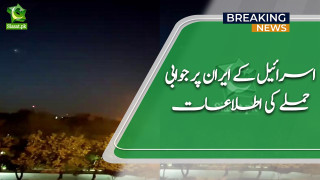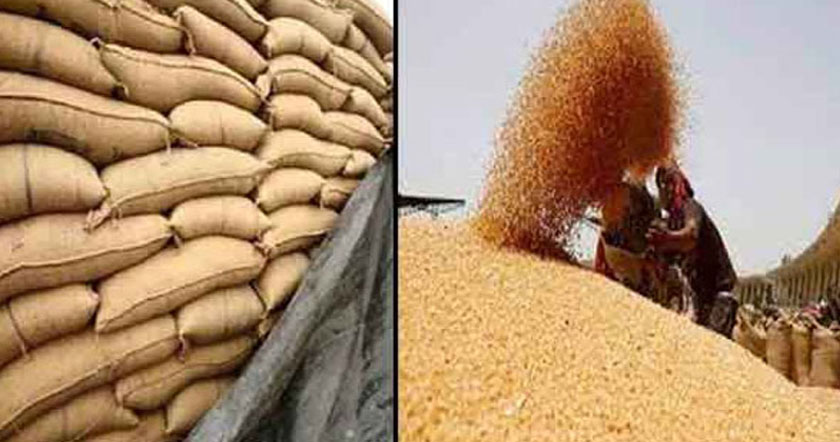Rainwater harvesting brings hope to farmers in Pakistan’s Punjab
Farmers in Pakistan’s Punjab province are greening their lands and combating weather vagaries through rainwater harvesting using small dams
Muhammad Khan washing his hands in a small dam used for rainwater harvesting [image by Aamir Saeed]
Aamir Saeed, December 30, 2015
Extreme weather conditions and erratic rainfall had added an edge of desperation to Muhammad Khan’s struggle for survival, taking him and his family to the brink of ruin. But that is happily in the past now, says the farmer in Pakistan’s Punjab province whose life has undergone a dramatic change after he started irrigating his land from rainwater harvested in a small dam in the village.
“I had a bumper vegetable crop in the last season. I have recently bought a new tractor and also started sending two of my grandsons to a private school,” said the 65-year-old resident of Thoa Mehram Khan village in Punjab’s Talagang sub-district.
With the bounty of plentiful water, Khan has been irrigating 16 acres of his 50 acres of land from the small dam and growing off-season vegetables like tomatoes, potatoes and cauliflower as well as fruits such as grapes and watermelons. This was unthinkable earlier.
Muhammad Khan tending his fields [image by Aamir Saeed]
He is not the only one. Others in the village are also cultivating newer crops on land that was arid not so long ago. Rainwater harvesting is a relatively new and innovative concept for many farmers in the region who are delighted to have water for crops and livestock throughout the year.
“Rainwater harvesting has also helped raise the groundwater table from 450 feet to 200 feet in the village,” says Khan. “This is also inspiring people of nearby villages to pool money for building mini dams so they can reap the benefits of modern agriculture.”
To construct a mini dam for rainwater harvesting, a natural stream or nullah (water channel) near farmland is identified and then choked by building a wall in the front. An engine is installed and water supplied to farms through a pipeline.
The small dam, which is 15 feet in height, is built on government land in the village and has a catchment area of one square kilometre, a command area of 250 kanals (about 500 square metres) and storage capacity 29.21 acres/feet.
A small dam of the type used for rainwater harvesting [image by Aamir Saeed]
The cost of the $4,279 project, which has changed so many lives, was shared by 20 families of the village and by the
International Fund for Agricultural Development (IFAD), both sides paying $2,139, an official said.
The importance of harvesting water is underscored by a
research paper published by the Pakistan Journal of Agricultural Sciences, which estimates that the
Potohar Plateau, including the Chakwal, Jhelum, Attock and Rawalpindi districts of Punjab province, covers an area of 2.2 million hectares and receives as much as 70% of its precipitation in just the monsoon season.
On top of this, groundwater supplies are depleting at 16 to 55 centimetres (6 to 21 inches) a year across Punjab province, according to a study by the
International Waterlogging and Salinity Research Institute.
Going macro
An estimated 64% of the country’s population lives in rural areas and earns a living from agricultural activities such as crop cultivation and livestock rearing, according to the 2010
agricultural census carried out by Pakistan Bureau of Statistics. There are 50,588 villages in Pakistan but all may not have terrain suitable for rainwater harvesting. The Potohar Plateau is believed to be the most suitable area in the country for natural places for rainwater harvesting with experts identifying 74 sites.
Around 145 million acre feet of water flows through Pakistan each year, but the country’s existing storage capacity is only 14 million acre feet. “Small dams and rainwater harvesting techniques could help the country increase its water storage capacity from 30 days to the international standard of 120 days,” said Dr Pervaiz Amir, country director for the
Pakistan Water Partnership.
The adverse impacts of climate change could exacerbate the crisis in a country on the verge of being classified as ‘water scarce’ with per capita water availability falling to 1,000 cubic metres, he added. The government, Amir stressed, needs to come up with feasible rainwater harvesting programmes for arid areas of the country. “Otherwise, growing water stress could turn into a catastrophe.”
Rainwater harvesting techniques not only supplement irrigation but also provide sufficient drinking water for livestock and population in the area, he said. It has multiple advantages and should be prioritised at the government level, agreed Dr Bilal Anwar, senior manager at the Centre for Climate Research and Development of COMSATS Institute of Information Technology, Islamabad. “There is huge potential for rainwater harvesting across the country. Moreover, this doesn’t require huge investment and infrastructure unlike big water storages.”
Rainwater harvesting techniques could help irrigate more land, improve the groundwater table, provide drinking water and increase incomes of subsistence farmers. “This could also prove a better adaptation strategy in the face of the adverse impact of climate change if farmers are trained in using drip and sprinkle irrigation techniques to conserve water,” he suggested.
The ripple effect
Encouraged by the success of the project in Thoa Mehram Khan, many other farmers in the area have started building small dams on their lands to harvest rainwater on a self-help basis. Amir Abdullah, a local activist and farmer, who is building a mini dam on his farmland in Dhok Sherjangyall, a village in Talagang, and hopes it will help store enough water during the monsoon to be utilised for irrigation round the year.
“Rainwater harvesting is a new concept for us but I hope it will help increase my agricultural yield by around 50%,” he said, urging the government to invest in construction of mini dams in the Potohar Plateau.
Punjab’s
Small Dams Organisation constructed 20 mini dams during the year 2000 and 2010, including 12 in Chakwal district, to help farmers irrigate more than 27,000 acres of land, an official said. Each dam costs about $4,000, but the tricky bit is finding an appropriate location and maintaining quality control. Experts suggest that nine of the 20 dams are of no use due to structural flaws and substandard construction and only 2,000 acres of land could be irrigated. No doubt as Pakistan continues along this path the success rate will improve, brightening the lives of Pakistani farmers.
source









































